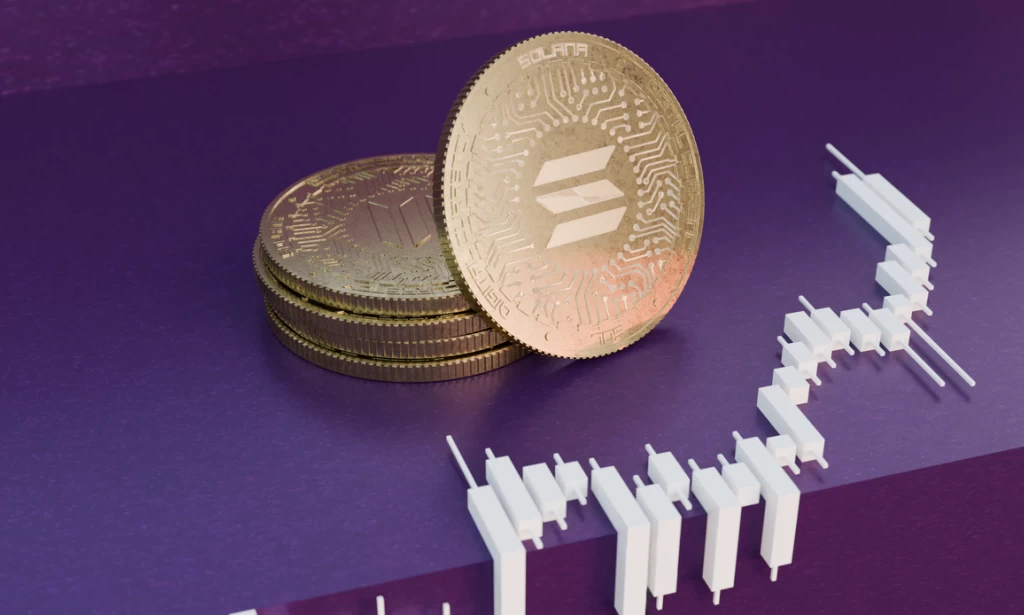Solana’s ecosystem Total Value Locked (TVL) surpassed $30bn in August and briefly reached $40bn, even as its market valuation grew more moderately.
The divergence points to improving capital efficiency, stronger onchain activity per unit of market cap, and a DeFi ecosystem whose fundamentals are beginning to match its price performance.
TVL as a gauge of network health
Total Value Locked (TVL) represents the cumulative value of all assets deposited across a blockchain’s applications. It measures how much capital is actively working within a network, providing liquidity, collateral or yield.. A rising TVL generally reflects growing user confidence and liquidity depth, while sustained inflows indicate durable participation rather than transient incentive chasing.
In Solana's case, steady TVL growth across lending, trading and taking markets highlights the network's consolidation as a functional financial layer. Rather than speculative surges, its DeFi base now shows signs of consistent user engagement and structural liquidity.
2025 growth and valuation compression
Solana’s (TVL) has doubled in 2025, rising from roughly $20bn at the start of the year to over $40bn by November, according to Token Terminal. That recovery extends a multi-year rebound from near-zero levels in 2023 following the FTX collapse, underscoring the network's resilience and renewed user trust.
Source: TokenTerminal
The expansion has coincided with pronounced valuation normalization. Solana’s Fully Diluted Valuation to Total Value Locked (FDV/TVL) ratio has fallen from over 13x in 2024 to roughly 3x today, suggesting that capital deployment onchain is growing faster than token valuation. In short, fundamentals are catching up to price.
While Solana’s market capitalization still reflects investor confidence in its growth narrative, the data implies that onchain utility, not just sentiment, is driving value. TVL growth has consistently outpaced market-cap expansion, signalling an ecosystem where liquidity depth and user activity are now leading indicators.
Sector composition and capital structure
More than 80% of Solana’s TVL remains concentrated in its three core DeFi sectors: stablecoins, decentralized exchanges (DEXs) and liquid staking. Stablecoins make up roughly 30% of locked value, reflecting Solana’s rising role as a settlement and liquidity hub for dollar-backed assets. DEXs account for around 28%, showing that trading and liquidity provision remain central to its onchain economy.
Liquid staking contributes about 25%, a key driver of capital efficiency across Solana’s DeFi stack. The ability to rehypothecate staked assets through protocols such as Marinade, Jito, and Kamino has deepened liquidity and expanded collateral use.
Source: TokenTerminal
Lending platforms represent roughly 12% of total TVL, an indicator of a developing but growing credit layer. Native staking now sits below 3%, as users increasingly favour liquid, yield-bearing derivatives. Emerging categories, tokenized funds and real-world asset issuers, together account for less than 2%, showing that Solana’s growth remains primarily DeFi-native rather than institutional.
Fundamentals leading price
The balance between valuation and TVL suggests a maturing ecosystem. In previous cycles, Solana’s valuation outpaced its fundamentals. In 2025, that dynamic has reversed: onchain liquidity, protocol revenue, and user activity are expanding faster than market price.
That shift reflects multiple factors: improved network stability, the rise of high-throughput trading platforms like Jupiter, and the reactivation of developer pipelines paused during the 2022–23 downturn. Together, they anchor Solana’s market performance in real economic activity rather than speculation.
While TVL alone cannot capture efficiency or profitability, its composition and growth trend now suggest structural adoption rather than cyclical hype.
Outlook
With valuation multiples normalising and liquidity deepening across core DeFi sectors, Solana’s network looks increasingly grounded in fundamentals. The compression of its FDV/TVL ratio marks a rare moment in crypto markets where activity, not narrative, is leading valuation.
If sustained, the trend could redefine how investors price on-chain growth — not by the tokens minted, but by the capital that stays.



You must be logged in to post a comment.